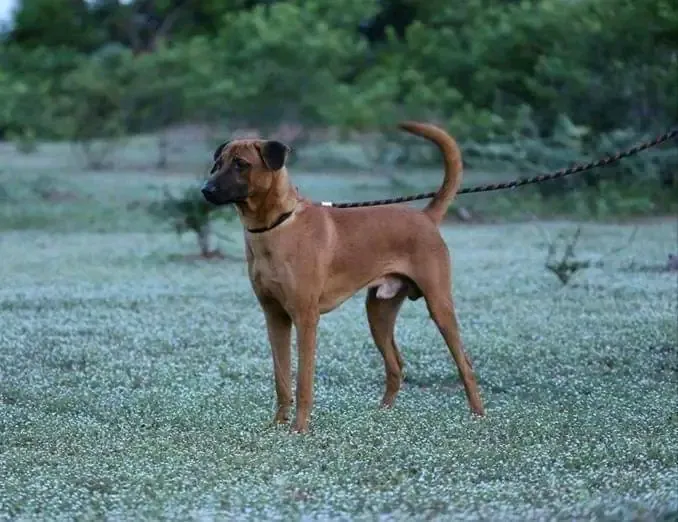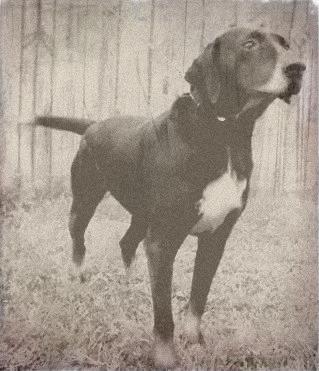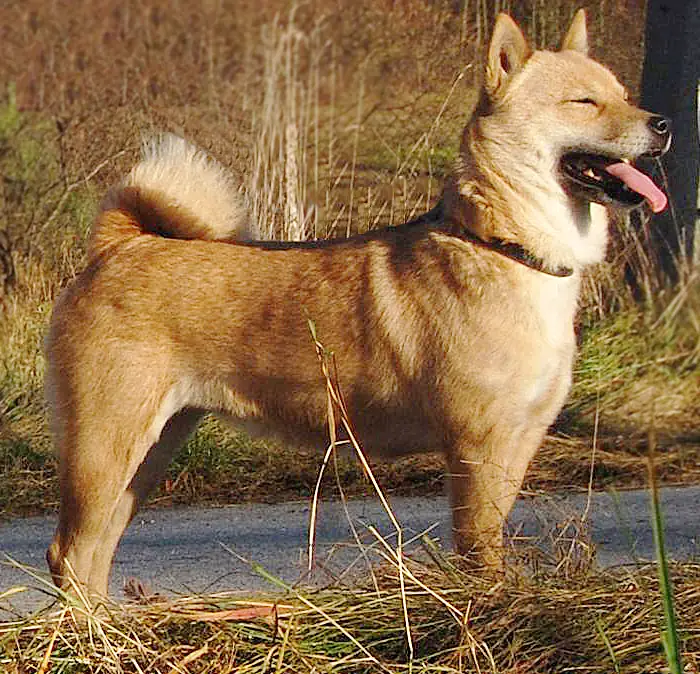Dogo Sardesco
The Dogo Sardesco is a powerful and loyal breed from Sardinia, known for its protective nature and versatility. With proper training and socialization, they make excellent family companions.
Overview
🐕Breed Overview
✨Key Traits
💡What Makes Dogo Sardesco Special
One of the standout traits of the Dogo Sardesco is its loyalty to its family. This breed forms strong bonds with its owners and is known to be protective, often acting as a guardian for children and property.
Their intelligence allows them to learn commands quickly, but they also require a firm hand in training to manage their independent streak. The Dogo Sardesco's versatility is another key trait; they can excel in various roles, from working dogs to family pets, as long as their exercise and socialization needs are met.
Their playful nature makes them great companions for active families, and their calm demeanor at home adds to their appeal as family pets.
The Dogo Sardesco, also known as the Sardinian Mastiff, is a powerful and loyal breed with a rich history rooted in the rugged landscapes of Sardinia, Italy. This breed was originally developed for herding livestock and guarding properties, showcasing its strength and protective instincts. With a muscular build and a confident demeanor, the Dogo Sardesco is not only a capable working dog but also a devoted family companion.
Their intelligence and eagerness to please make them highly trainable, though they require consistent and positive reinforcement training methods. In terms of personality, the Dogo Sardesco is known for its loyalty and affection towards its family. They are protective of their loved ones and can be wary of strangers, making them excellent watchdogs.
However, early socialization is crucial to ensure they develop a well-rounded temperament. This breed is highly active and requires ample exercise to stay happy and healthy. Daily walks, playtime, and mental stimulation are essential to prevent boredom and destructive behaviors.
The Dogo Sardesco is also known for its versatility. While they excel in working roles, they can adapt well to family life, provided their exercise and socialization needs are met. Their strong prey drive means they may not be suitable for homes with small pets unless properly trained.
Overall, the Dogo Sardesco is a remarkable breed that thrives on companionship, activity, and a strong bond with its family. For potential owners, understanding the breed's needs and characteristics is vital to ensuring a harmonious relationship. With proper training, socialization, and exercise, the Dogo Sardesco can be a loyal and loving addition to any home.
🎉Fun Facts
Dogo Sardescos are often described as gentle giants, especially with children in their families.
The Dogo Sardesco is known for its impressive strength and agility, making it a formidable guardian.
They have a unique ability to bond closely with their families, often forming strong attachments to their owners.
This breed has a strong prey drive, which can be traced back to its history as a hunting dog.
Breed Characteristics
Family & Friends
Good Behavior
Get Up & Go
Household Harmony
Temperament & Personality
✨Key Traits
🐕Core Temperament
The Dogo Sardesco has a temperament characterized by loyalty, protectiveness, and intelligence. They are affectionate with their families and can be playful, especially with children.
This breed is known for its calm demeanor at home but can be energetic and enthusiastic during playtime. While they are generally good with children, early socialization is essential to ensure they are comfortable around other pets and strangers.
Their protective instincts can lead to territorial behavior, so training and socialization are crucial to managing these tendencies. Overall, the Dogo Sardesco is a devoted and loving companion that thrives on companionship and activity.
💫Personality Profile
The Dogo Sardesco is known for its loyal and protective nature. They are affectionate with their families and can be quite playful, making them excellent companions for active households.
This breed is intelligent and eager to please, which contributes to their trainability. However, they can also be independent and stubborn at times, requiring consistent training and socialization from an early age.
Dogo Sardescos are typically reserved around strangers, making them effective watchdogs. Their energy levels are high, and they thrive on regular exercise and mental stimulation.
🔊Vocal Tendencies
The Dogo Sardesco is generally not a vocal breed, with a barking tendency rated at 2. They may bark to alert their owners of strangers or unusual occurrences but are not known to bark excessively.
Their vocalizations are typically reserved for specific situations, such as when they feel their family is threatened or when they are excited during playtime. Overall, they are relatively quiet dogs, making them suitable for various living environments, including urban settings, provided they receive adequate exercise and mental stimulation.
Affection & Social Traits
Energy & Activity
Communication Style
Care Requirements
🏃♂️Exercise Requirements
Daily Exercise
The Dogo Sardesco is a highly active breed that requires a significant amount of exercise to maintain its physical and mental well-being. Ideally, an adult Dogo Sardesco should engage in at least 60 to 90 minutes of vigorous exercise each day.
This can include activities such as brisk walks, running, playing fetch, and participating in dog sports like agility or obedience training. Puppies may require shorter, more frequent exercise sessions to accommodate their developing bodies, while senior dogs may benefit from moderate exercise to keep them fit without overexerting themselves.
Regular exercise is crucial for preventing behavioral issues such as boredom or anxiety, which can lead to destructive behaviors. Insufficient exercise can result in weight gain, decreased cardiovascular health, and overall unhappiness in the breed.
Preferred Activities
🏠Living & Adaptability
Space Requirements
The Dogo Sardesco thrives in environments that provide ample space for exercise and play. Ideally, they should have access to a large, securely fenced yard where they can run and explore.
While they can adapt to apartment living if given sufficient daily exercise, they are best suited for homes with large yards or rural settings. Owners in smaller spaces should ensure they can commit to regular outdoor activities to meet the breed's exercise needs.
Lack of adequate space can lead to restlessness and destructive behavior, so it's essential to provide opportunities for physical activity and mental stimulation.
Climate Preference
🍲Feeding Guide
Schedule
Food Types
Portion Size
Special Nutritional Needs
The Dogo Sardesco may have specific dietary needs, particularly related to its size and activity level. High-quality protein is essential for muscle maintenance, and owners should be cautious of overfeeding to prevent obesity.
Regular veterinary check-ups can help identify any food sensitivities or allergies. Supplements such as omega fatty acids can support skin and coat health.
✨Grooming Requirements
Grooming Overview
The Dogo Sardesco has a short, dense coat that requires minimal grooming. Regular brushing, about once a week, is sufficient to remove loose hair and keep the coat healthy.
Bathing should be done as needed, typically every few months or when the dog gets particularly dirty. It's important to check their ears regularly for dirt and wax buildup and clean them as necessary.
Nail trimming should be done every 2-4 weeks to prevent overgrowth. Overall, grooming is relatively low-maintenance for this breed, making it suitable for owners who prefer a less demanding grooming routine.
Care Schedule
Brush weekly, bathe as needed (every few months), trim nails every 2-4 weeks.
Health Profile
⚕️Health Care
Regular health care is crucial for the Dogo Sardesco's lifespan. Routine veterinary check-ups, vaccinations, and preventive treatments can help detect health issues early and maintain overall health.
Owners should also be proactive in managing their dog's weight and nutrition, as obesity can lead to various health problems. Regular dental care and parasite prevention are also important aspects of maintaining optimal health throughout the dog's life.
Health Issues Overview
⏳Average Lifespan
Genetic Factors
Genetics play a significant role in the Dogo Sardesco's lifespan, with hereditary health issues being a concern. Responsible breeding practices that prioritize genetic diversity can help reduce the risk of inherited conditions. Potential owners should seek reputable breeders who conduct health testing on their breeding stock to ensure the best possible genetic health for their puppies.
Living Conditions
The Dogo Sardesco's lifespan can be influenced by various environmental factors, including housing conditions, climate, and social interactions. A stable and loving home environment, along with regular exercise and mental stimulation, can promote longevity.
Exposure to extreme weather conditions should be managed, as this breed prefers moderate climates. Social interactions with family members and other pets can also contribute to a happy and healthy life, reducing stress and anxiety.
🏥Common Health Issues
Hip Dysplasia
Warning Signs
🔬Diagnosis
Veterinarians typically diagnose hip dysplasia through physical examinations and X-rays.
💊Treatment
Treatment options include weight management, physical therapy, and in severe cases, surgical intervention.
📝Management Tips
Maintain a healthy weight, provide joint supplements, and engage in low-impact exercises to support joint health.
Elbow Dysplasia
Warning Signs
🔬Diagnosis
Diagnosis is made through physical exams and imaging techniques like X-rays.
💊Treatment
Treatment may involve medication, physical therapy, or surgery.
📝Management Tips
Regular exercise and maintaining a healthy weight can help manage symptoms.
Bloat (Gastric Dilatation-Volvulus)
Warning Signs
🔬Diagnosis
Diagnosis is often based on clinical signs and X-rays.
💊Treatment
Emergency treatment is required, which may involve surgery to correct the condition.
📝Management Tips
Feed smaller, more frequent meals and avoid vigorous exercise immediately after eating.
🛡️Preventive Care
🔬Hip Evaluation
Hip Evaluation assesses the hip joints for dysplasia and other abnormalities, which is crucial for this breed due to its predisposition to hip dysplasia.
📅 Recommended at 12 months and then every 2 years thereafter.
🔬Elbow Evaluation
Elbow Evaluation checks for elbow dysplasia, which is common in large breeds like the Dogo Sardesco.
📅 Recommended at 12 months and then every 2 years thereafter.
🔬Cardiac Evaluation
Cardiac Evaluation screens for heart conditions that may affect the breed, ensuring early detection of potential issues.
📅 Recommended annually after 5 years of age.
Training
🧠Intelligence & Trainability
💪Work Drive
The Dogo Sardesco has a strong work drive, stemming from its historical roles as a herding and guarding dog. This breed thrives when given tasks or jobs to do, whether it's participating in dog sports, engaging in obedience training, or helping with farm work.
Mental stimulation is essential for their well-being, as boredom can lead to destructive behaviors. Activities such as agility training, scent work, and obedience competitions can provide the necessary mental challenges to keep the Dogo Sardesco fulfilled and happy.
⚠️Training Considerations
The Dogo Sardesco can exhibit behavioral challenges, particularly if not properly socialized or trained from an early age. Common issues include territorial aggression, stubbornness, and a strong prey drive.
To overcome these challenges, consistent training and early socialization are crucial. Positive reinforcement techniques work best, as this breed responds well to rewards and praise.
Engaging in obedience training and exposing the dog to various environments, people, and other animals can help mitigate potential behavioral issues. Owners should be prepared to invest time and effort into training to ensure a well-adjusted and well-behaved companion.
📝Training Tips
Training a Dogo Sardesco requires patience, consistency, and a firm yet gentle approach. Start with basic obedience commands and gradually introduce more advanced training as the dog matures.
Socialization is key; expose the dog to different environments, people, and other animals to foster a well-rounded temperament. Incorporate mental stimulation through puzzle toys and interactive games to keep the dog engaged.
Regular training sessions should be kept short and fun to maintain the dog's interest. Establishing clear boundaries and expectations will help the Dogo Sardesco thrive as a well-behaved family member.
History & Heritage
📜Origin Story
The Dogo Sardesco originated on the island of Sardinia, where it was bred by local shepherds and farmers to assist in herding and protecting livestock. The breed's history is intertwined with the island's agricultural practices, as it was essential for managing flocks of sheep and goats.
The Dogo Sardesco's strong physique and protective nature made it an ideal guardian against predators such as wolves and wild boars. Over the years, the breed gained popularity not only for its working abilities but also for its loyalty and companionship.
Today, the Dogo Sardesco is recognized as a national treasure of Sardinia, symbolizing the island's rich cultural heritage and agricultural traditions.
⏳Development History
The Dogo Sardesco's development can be traced back to ancient times, with influences from various breeds, including the Mastiff and the Italian breeds used for herding and guarding. Over the years, selective breeding focused on enhancing its physical strength, protective instincts, and working capabilities.
The breed was primarily developed to assist farmers in managing livestock and protecting their properties from predators. In the 20th century, efforts were made to standardize the breed, leading to the establishment of breed standards that emphasize its robust physique and temperament.
Today, the Dogo Sardesco is recognized for its loyalty, intelligence, and versatility, making it a popular choice for families and working roles.
🛡️Purpose & Historical Role
Historically, the Dogo Sardesco served multiple roles, primarily as a herding and guarding dog. Its strength and agility made it effective in managing livestock, while its protective instincts ensured the safety of both animals and property.
In addition to herding, the breed was also used for hunting large game, showcasing its versatility and adaptability. In modern times, the Dogo Sardesco has transitioned into family companions, therapy dogs, and working dogs in various capacities, including search and rescue and protection work.
🏺Cultural Significance
The Dogo Sardesco has deep roots in Sardinia, Italy, where it has been used for centuries as a versatile working dog. Historically, this breed was employed for herding livestock, guarding property, and even hunting large game.
Its strong build and protective nature made it a valuable asset for farmers and shepherds. The Dogo Sardesco is also celebrated in Sardinian culture, often featured in local folklore and traditions.
Its loyalty and courage have earned it a special place in the hearts of Sardinians, making it a symbol of pride for the region.
Conservation Status
This breed is less common but has stable populations in certain regions.








